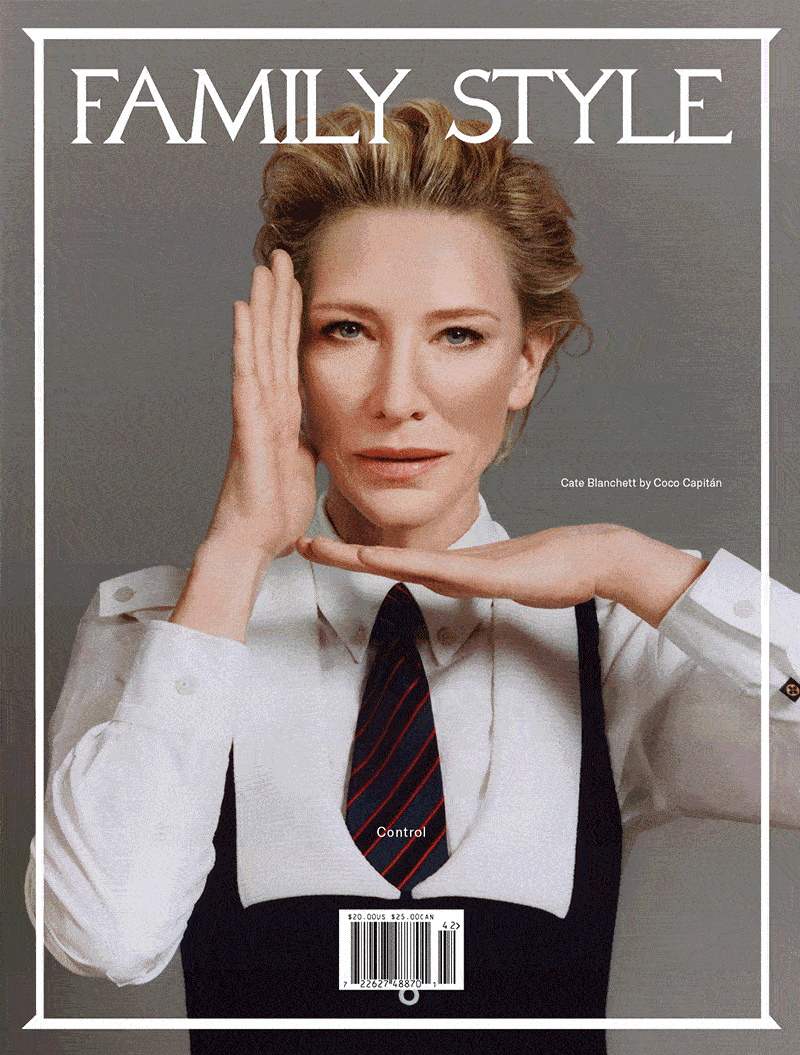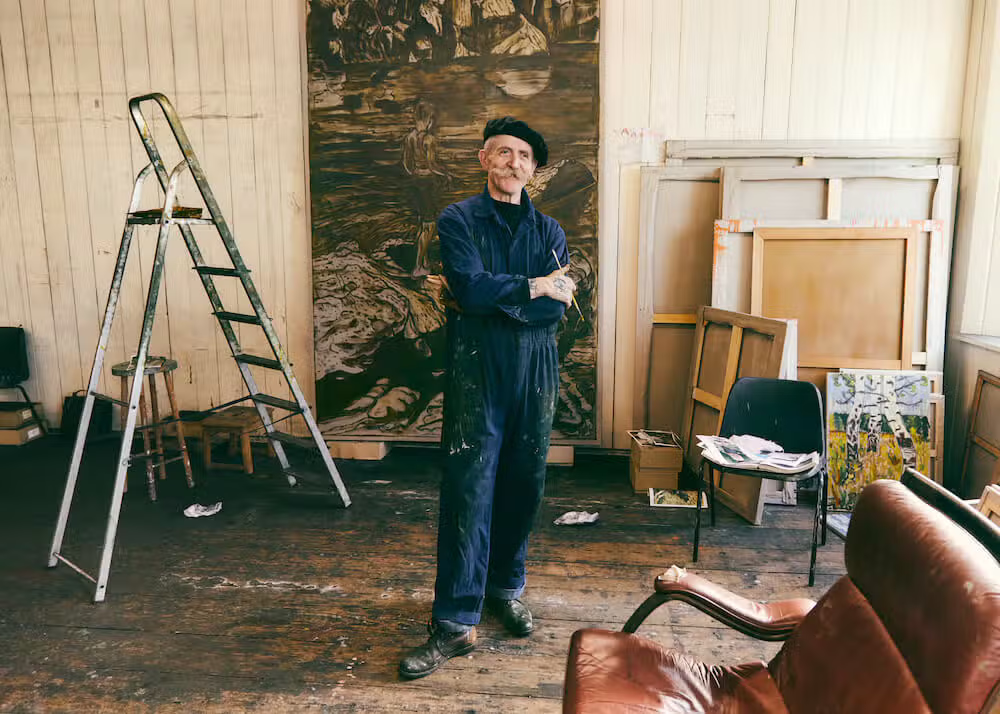
Billy Childish. Photography by Ellie Smith. Image courtesy of the artist and Lehmann Maupin.
Billy Childish only paints on Mondays. Occasionally, a Sunday or Tuesday might slip in, but any deviations from his strict schedule are rare. While the British artist works, classical music plays on the radio—though, as he tells me, “Monday afternoons on BBC Radio 3 can be a modernist hell!”
Childish, 65, looks like a man unstuck in time, dressed in paint-splattered navy overalls and a beret tilted just so. Tattoos peek from his sleeves, and a burly Edwardian mustache curls just above his lips. Painter, poet, maritime ghost: Where he's headed, only he knows.
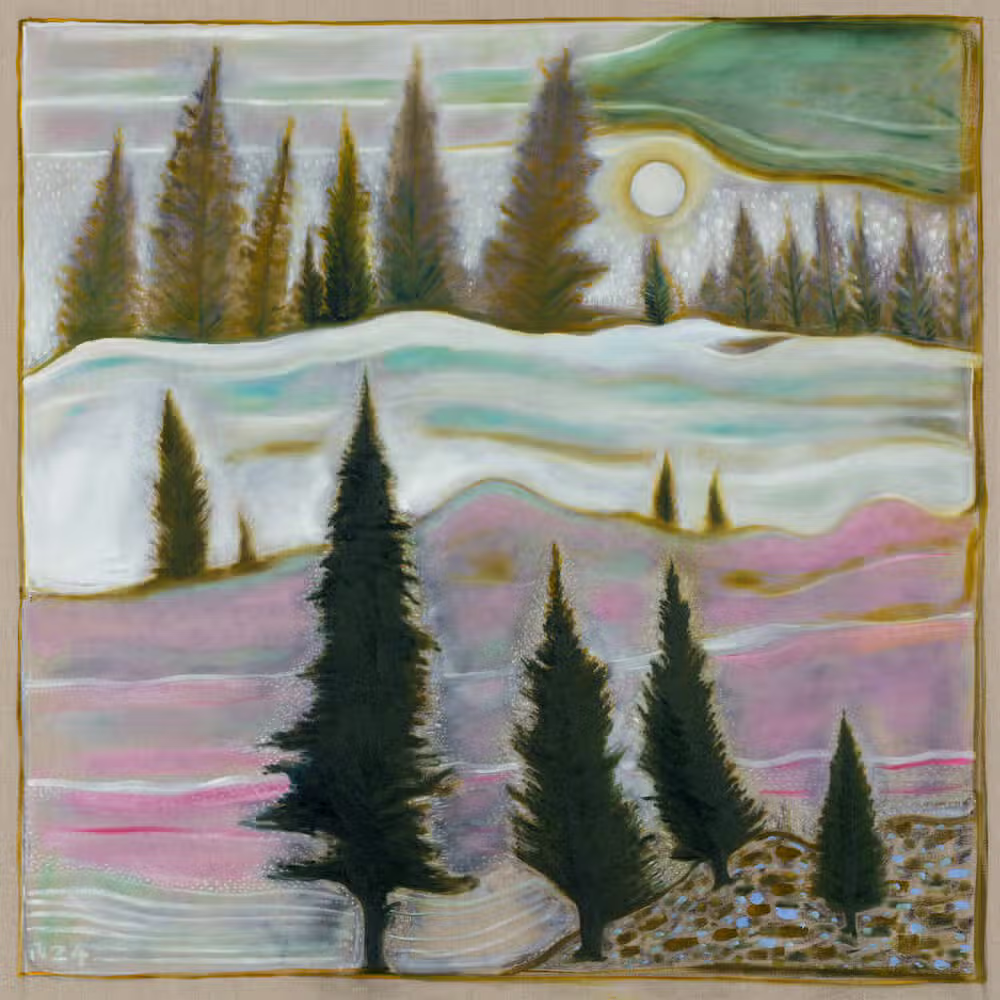
Billy Childish, mist and snow, 2024. Image courtesy of the artist and Lehmann Maupin.
The Kent-based artist’s latest series of paintings depict nebulous winter landscapes shimmering with an inner luminosity. On view through February 15 at Lehmann Maupin's Mayfair space, his works unsettle the gallery's white walls. In “like a god i love all things,” Childish’s scenes of low hanging suns, hazy skies, and sombre trees flicker as dreams do. Stare too long at mist and snow, 2024, for example, and the hills might begin to sag, or the evergreens to sway, as if the representation itself is shifting. There are no figures, no markers of place or time.
Childish’s portraits follow the same logic, though modeled after himself and those close to him. “They represent the universal and the eternal, not the specific," he explains. In self-portrait, 2023, he renders himself in lustrous greens, browns, and yellows, his brows furrowed—perhaps hardened by age. Blue and white splotches fill the background. His attire gives a sense that it’s winter, but where and when remains unclear; his jacket and hat could be from any era.
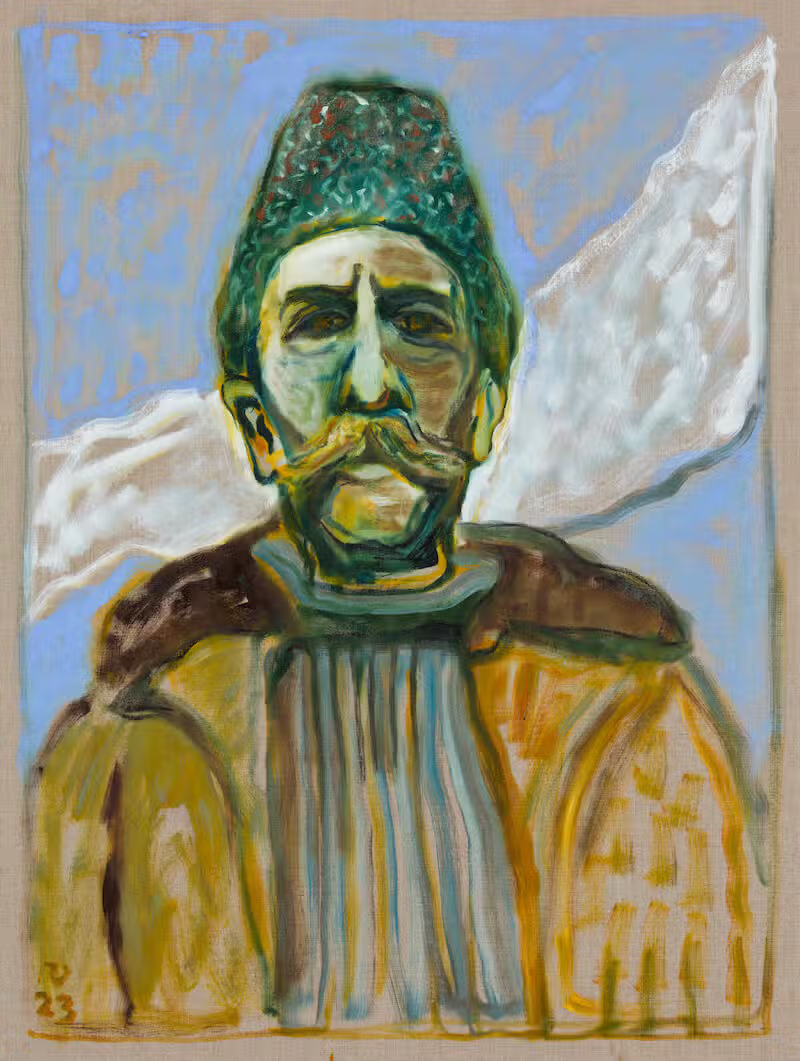
Billy Childish, self-portrait, 2023. Image courtesy of the artist and Lehmann Maupin.
The artist's paintings carry a wordless language, one that goes against our very impulse to define and place. Childish’s dialect is one of sensual, singular power, born from felt experience, like a child creating and playing in a world only he can see. He recalls a memory from when he was 3: sitting in a gutter with his friend, “little Jeffery,” making mud pies with “lolly sticks” for no particular reason. That same unconscious impulse steers Childish today. He is “drawn only by the desire to be part of, and impart something of, the wonder of being here.”
In London, each work emerges not from intellectual posturing but from what Childish describes as shamanic forces breaking through into his mind. Animals and trees populate this realm: wolves glinting with eerie tension, deer traversing snowy flatlands, a boy balancing precariously on a speckled steed. "They are the energies of nature, the great creation," he elaborates. “They want to be painted, so I do as I'm told.”
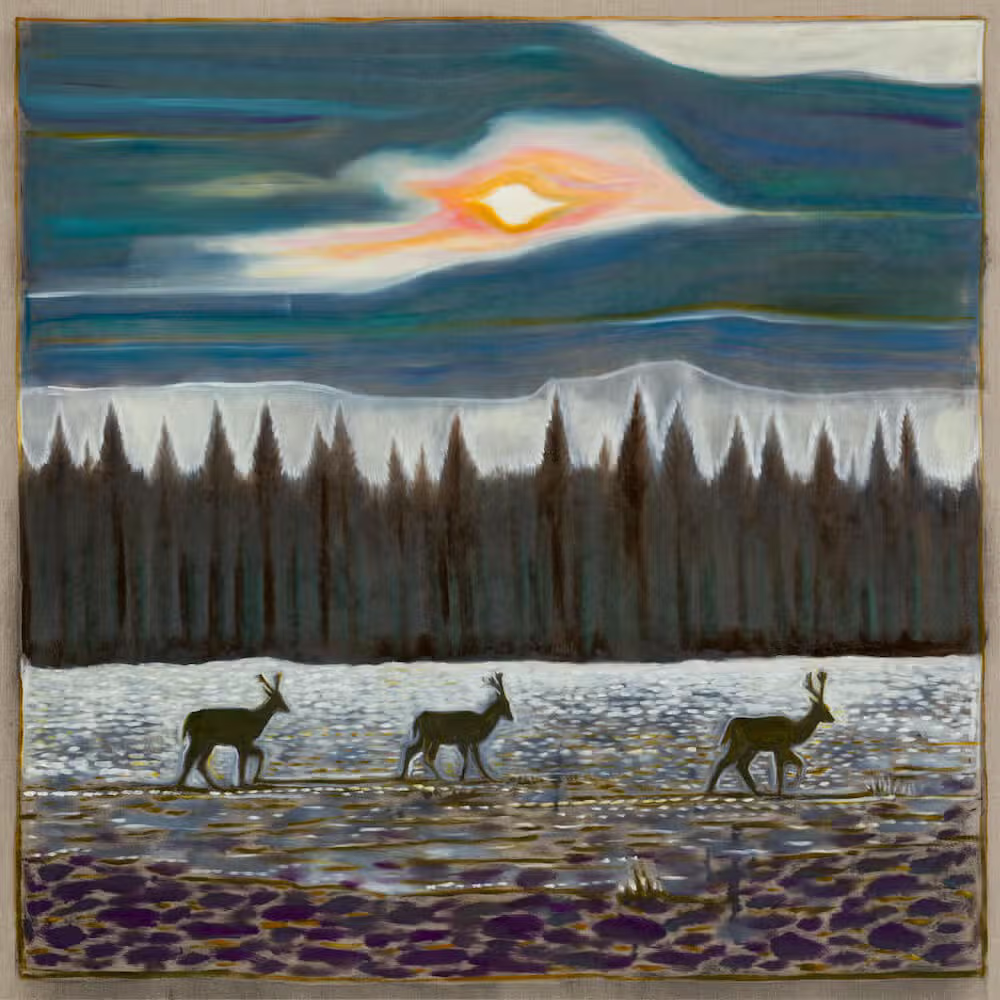
Billy Childish, deer, northern sun, 2025. Image courtesy of the artist and Lehmann Maupin.
According to Childish, the artist’s purpose is to channel something greater, not simply to collect the praises and prizes that might come with success. Creation is something lived and then enacted. To be an outsider is to remain open. Childish’s life mirrors this philosophy of perpetual becoming. Over 40 volumes of confessional poetry, photographs, prints, thousands of paintings, several novels, and more than 170 LPs encompass the incredible range of his career.
Leaving school at 16, Childish apprenticed as a stonemason in Chatham Kent's local dockyards, during which he produced more than 600 drawings. There, Childish intentionally smashed his hand to get out of the job; for more than a decade after, he painted on the dole. His relationship with formal education proved equally rebellious. He was accepted into Saint Martin's School of Art in '78, only to quit a month later; in 1980 he was re-accepted only to be expelled in ‘81 for publishing what the school deemed “obscene” poetry. It was there that he met painter Peter Doig, with whom he shared an appreciation of Munch, Van Gogh, and the blues. Doig would later co-curate Childish’s first London show at the Cubit Street Gallery in ‘93.
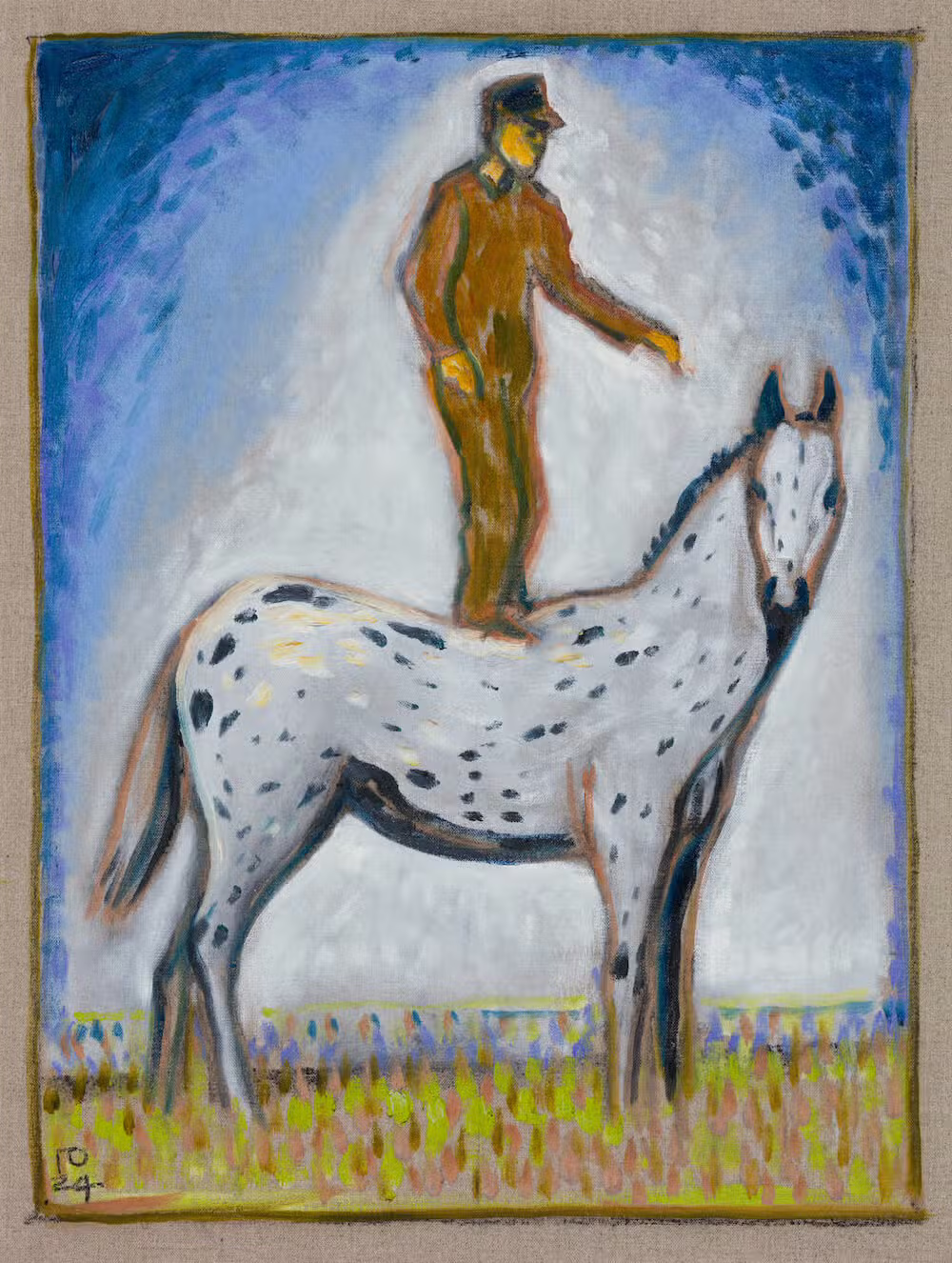
Billy Childish, boy stood on horse 1, 2024. Image courtesy of the artist and Lehmann Maupin.
During this formative period, Childish's vision expanded into music, co-founding punk bands Thee Milkshakes and Thee Mighty Caesars, whose lo-fi, surf-rock energy laid the groundwork for bands like Thee Oh Sees, Thee Open Sex, and Thee Tsunamis decades later. Today, he performs alongside his wife Julie—she on bass, he on guitar, both sharing vocals.
Childish’s short-lived romance with Tracey Emin (the enfant terrible of the Young British Artists) from 1982 to 1985 remains one of the most publicly visible influences on him, with numerous works by each artist immortalizing their time together. Their artistic back-and-forth persisted long after they split, famously reigniting in the late ‘90s when Emin dismissed Childish and his peers as “stuck, stuck, stuck!” The insult unintentionally gave rise to the Stuckist movement, which Childish co-founded with Charles Thomson in ‘99 as a counter to the new-age conceptualism dominating London’s artistic milieu.
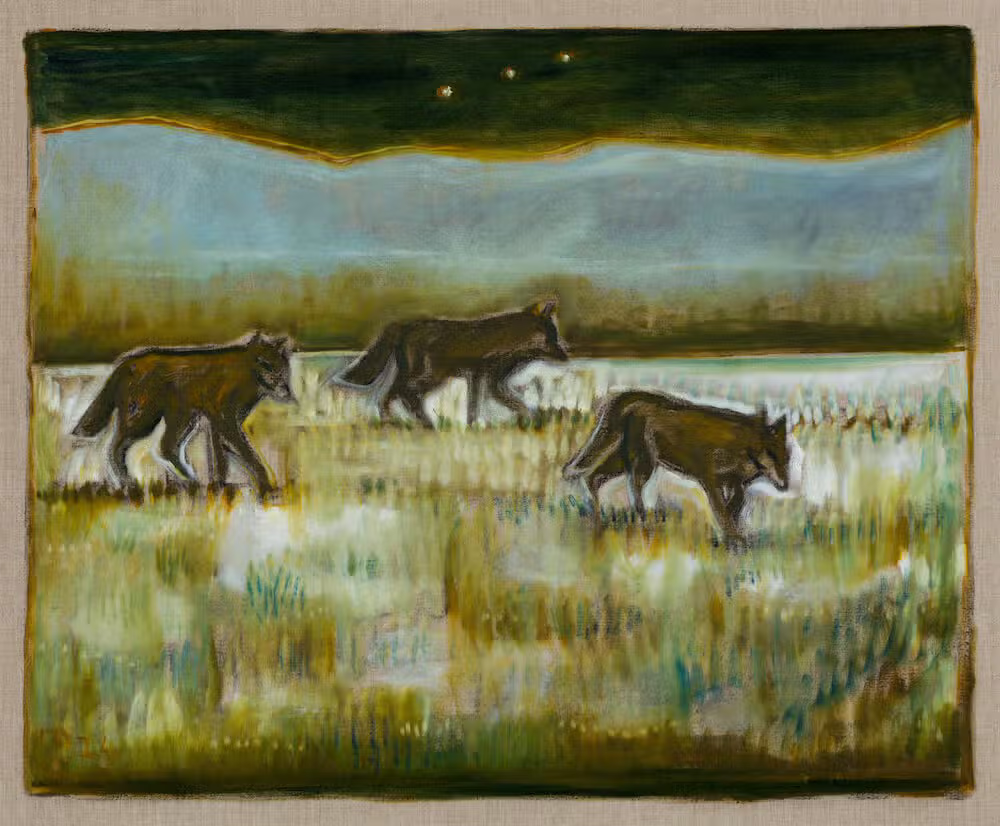
Billy Childish, 3 wolfs, 2024. Image courtesy of the artist and Lehmann Maupin.
True to form, Childish left the Stuckists at the turn of the century to go his own way and finally had his first big breakthrough nearly a decade later with his solo exhibition “Unknowable but Certain,” 2010, at the Institute of Contemporary Arts in London. It was the first time a public institution attempted to encompass his extensive 33-year career, highlighting his work as an artist, musician, and writer. In the decades that followed, Childish’s work continued to explore many of the same themes. The raw, unfiltered approach that marked his earlier punk work remains present in his current practice, where he resists the pressures of external validation and embraces continual self-reinvention. His opposition to convention—in art, music, or life—has kept him in perpetual motion, the very antithesis of being “stuck.”
Like a certain young poet who abandoned 19th-century French society in pursuit of an untethered existence, Childish continues to scorn the art world's rigid hierarchies. Yet for all his rebellion, he remains a man of radical tradition. A Rimbaud in flux. Only in his studio on Mondays, save for the rare extra day. Through ritual, Childish charts a pathway to freedom, allowing creativity to flow into him unbidden. Each painting, poem, or song he makes is not just an enactment of the unconscious will in action, but of pure, immediate presence. As in “like a god i love all things,” there is no augury of the artist’s future, no long list of art history references. There is only the here and now.
“Like a god i love all things” is on view until February 15, 2025 at Lehmann Maupin London at 9 Cork St, London W1S 3LL, United Kingdom.











